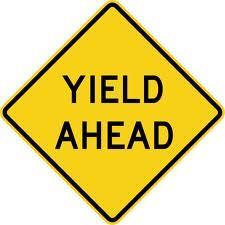%%bloglink%%

JP Morgan recently released a brochure touting “Of the 405 dividend payers in the S&P 500, 283 or 70% are currently out-yielding 10 year Treasury bonds” and it then went on to discuss a wide variety of products they could sell to their clients and potential clients who were looking for income producing investments.
After reading this, I couldn’t help but think of my kids and their Halloween candy.
As soon as my kids get back from trick-or-treating they sort all their candy into three piles; favorites, second favorites and everything else. Then they start trading with each other. “I’ll trade you my Dots for your Snickers.” “I’ll trade two of my Whoppers for one of your Kit Kats” and they keep trading until each one no longer has any more candies that they don’t want that the other one does.
From a distance this makes very little economic sense. Why spend all the time and energy sorting and trading one candy for another that appears to be just as good? I know, however, that all candies are not created equal and the leftover collection of Halloween candy (or any other holiday candy for that matter) that sits in the office lunchroom day after day proves my point.
Back to talking about investments.
Dividend Paying Stocks and Bonds both generate income (they are both candy) but they also have many different characteristics and a trait that might place it in your “favorites pile” (such as peanut butter filling) might be the exact same trait that puts it in my “other pile.” (I don’t like peanut butter)
Here is how I view the similarities and differences between Dividend Paying Stocks and Bonds.
Similarities:
- Both generate income in a predictable manner (quarterly, semi-annually, etc.).
- Both require the company to either have cash (profits or reserves) or access to cash (lines of credit) in order to generate the income.
Differences
- The price of stocks, even dividend paying stocks, generally move more both up and down than bonds. This offers the potential for greater profits but also the potential for greater losses.
- Stock prices move everyday and there is no point in the future you can point to and know exactly what the price will be whereas barring bankruptcy or other major financial problems, bonds will be redeemed at face value at their maturity date.
- Income earned as dividends from stocks and income earned as interest from bonds has at times been taxed differently.
- Dividends can be increased or decreased at the company’s discretion.
- According to the latest update (October 2012) from the Standard & Poor’s Dividend Report of the over 3,000 dividend paying stocks that trade on major U.S. stock exchanges.
- 1447 companies have raised their dividends during 2012
- 124 companies have lowered their dividends during 2012
- According to the latest update (October 2012) from the Standard & Poor’s Dividend Report of the over 3,000 dividend paying stocks that trade on major U.S. stock exchanges.
My point is not that Dividend Stocks are better or worse than Bonds, my point is Dividend Stocks are not an equal alternative to Bonds and you need to be aware of the advantages and limitations of both before choosing how to allocate your resources.
